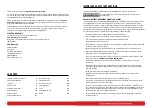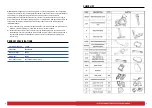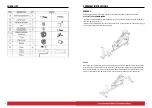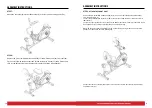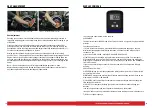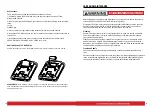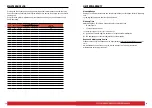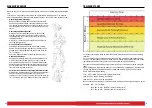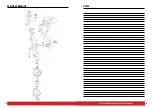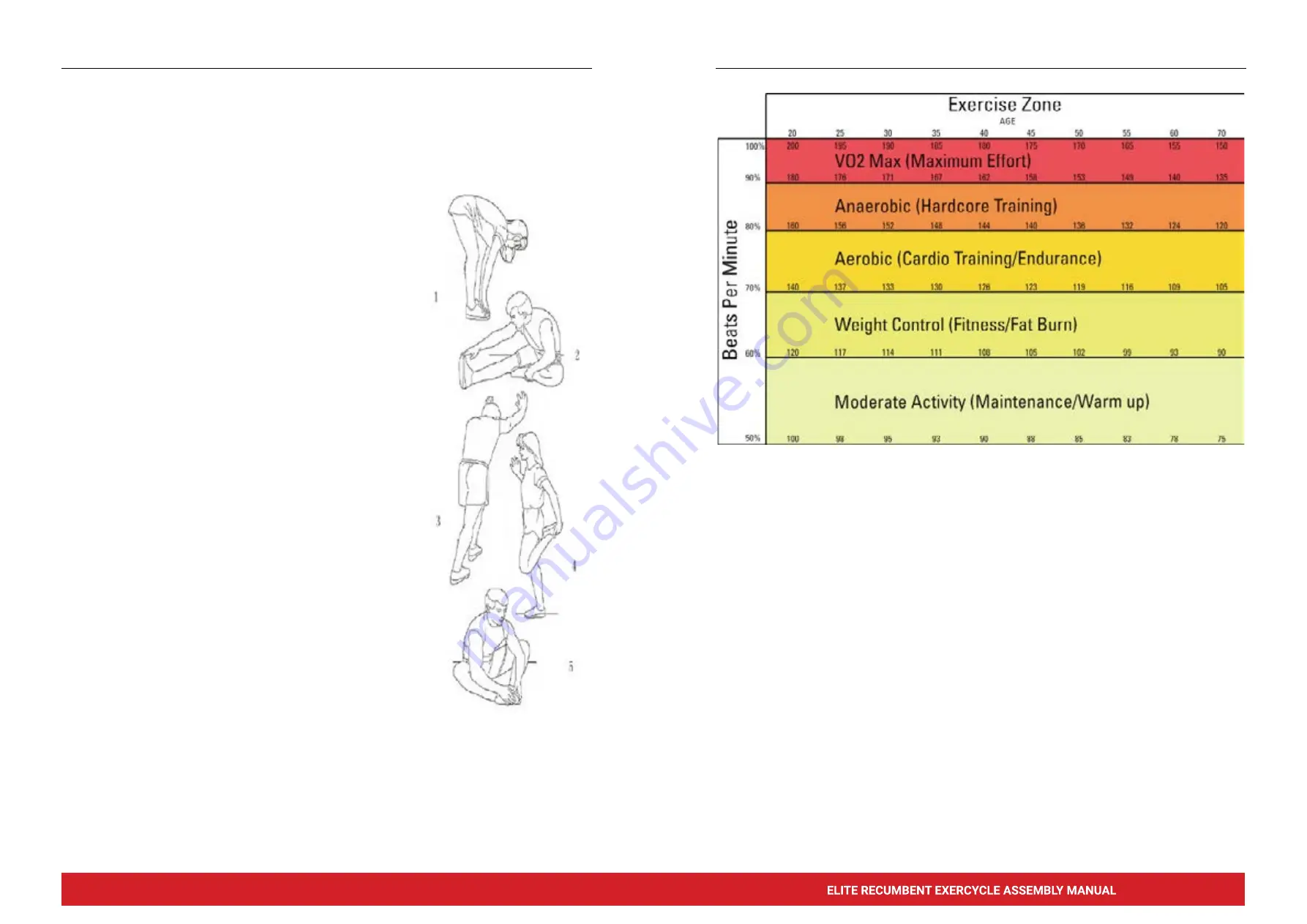
21
20
ELITE VO2 EXERCYCLE ASSEMBLY MANUAL
Warm up exercise is important in preparing the muscles for activity whilst minimising the
risk
of injury. You may choose to warm up with a light/brisk walking pace for 5-10 minutes
before stopping and performing some simple stretches. (As shown in the pictures below)
—
Hamstring Stretch (Standing)
Keep your knees slightly bent and slowly lean forward,
back and shoulders relaxed, reaching towards your toes.
You should feel the tension and slight discomfort in your
hamstring muscles. Hold for 15-20 seconds. Repeat 2-3
times.
—
Hamstrings Stretches (Seated)
Sitting on the floor preferably on a mat, put one leg
straight, the other inward and close to the inside of
the straight leg. Lean forward from the hips, reaching
towards your toes.
Hold for 10-15 seconds, and relax. Repeat 3 times for
each leg (See picture 2).
—
Crus and Feet Tendon Stretches
Standing with two hands on the wall or tree, one leg
behind. Keeping your legs straight and the heel on the
ground, lean forward towards the wall or tree. Hold for
10-15 seconds,
and relax. Repeat 3 times for each leg (See picture 3).
—
Quadriceps Stretches
Keeping your balance with your left hand holding onto
a wall or stationery fixture, grasp your right foot with
your right hand and stretch your right heel toward your
buttocks slowly, until you feel the stretch in the front of
your thigh. Hold for 10-15 seconds, and relax. Repeat 3
times for each leg (See picture 4).
—
Sartorius (Inner Muscles of the Thigh) Muscle Stretches
Sitting down with the soles of your feet or shoes together
and your knees positioned outward. Pull your feet
towards your groin until you can feel the stretch. Hold for
10-15 seconds, and relax. Repeat 3 times (See picture 5).
WARM-UP EXERCISE
Cardiovascular training plays an important part in maintaining a healthy heart and lung
function,
so it’s no surprise we should be paying attention to how quickly our heart beats during
exercise. The chart above outlines a range of heart rate training zones determined by the
individual’s age and workout goals to ensure you train safely and effectively.
Heart Rate can be measured by using the radial (wrist) or carotid (neck) pulse using your
index
and middle fingers, counting the beats for 10 seconds and multiplying by 6. Alternatively,
the use of a Wireless Telemetry Heart Rate strap and watch will give you an accurate
Beats Per Minute (BPM) reading.
220 – AGE = TMHR (Theoretical Maximum Heart Rate)
TMHR x 85% = (Upper Training Limit) BPM
TMHR x 65% = (Lower Training Limit) BPM
Note: Contact heart rate may provide inaccurate readings and is designed only as a guide
Example: 220 – 39 = 181 BPM
181 x 85% (0.85) = 154 BPM (Upper Training Limit)
181 x 65% (0.65) = 118 BPM (Lower Training Limit)
TRAINING STAGES


